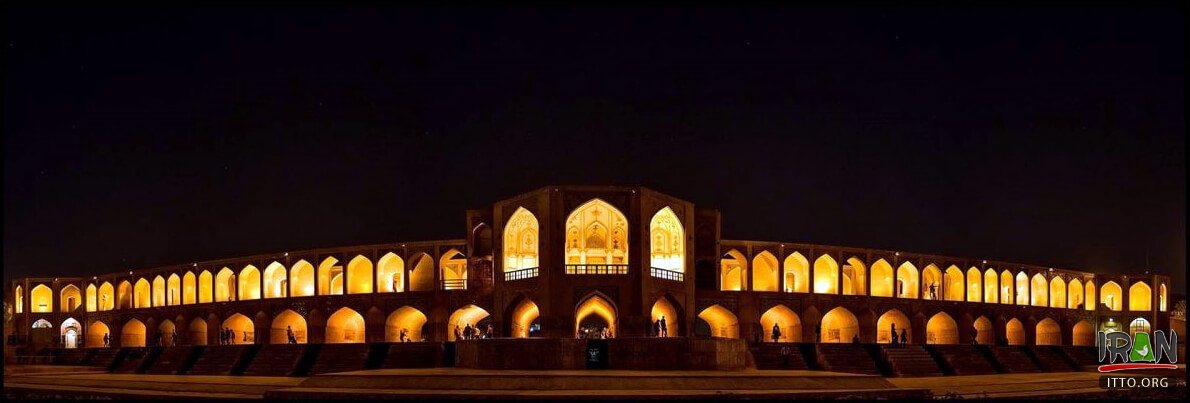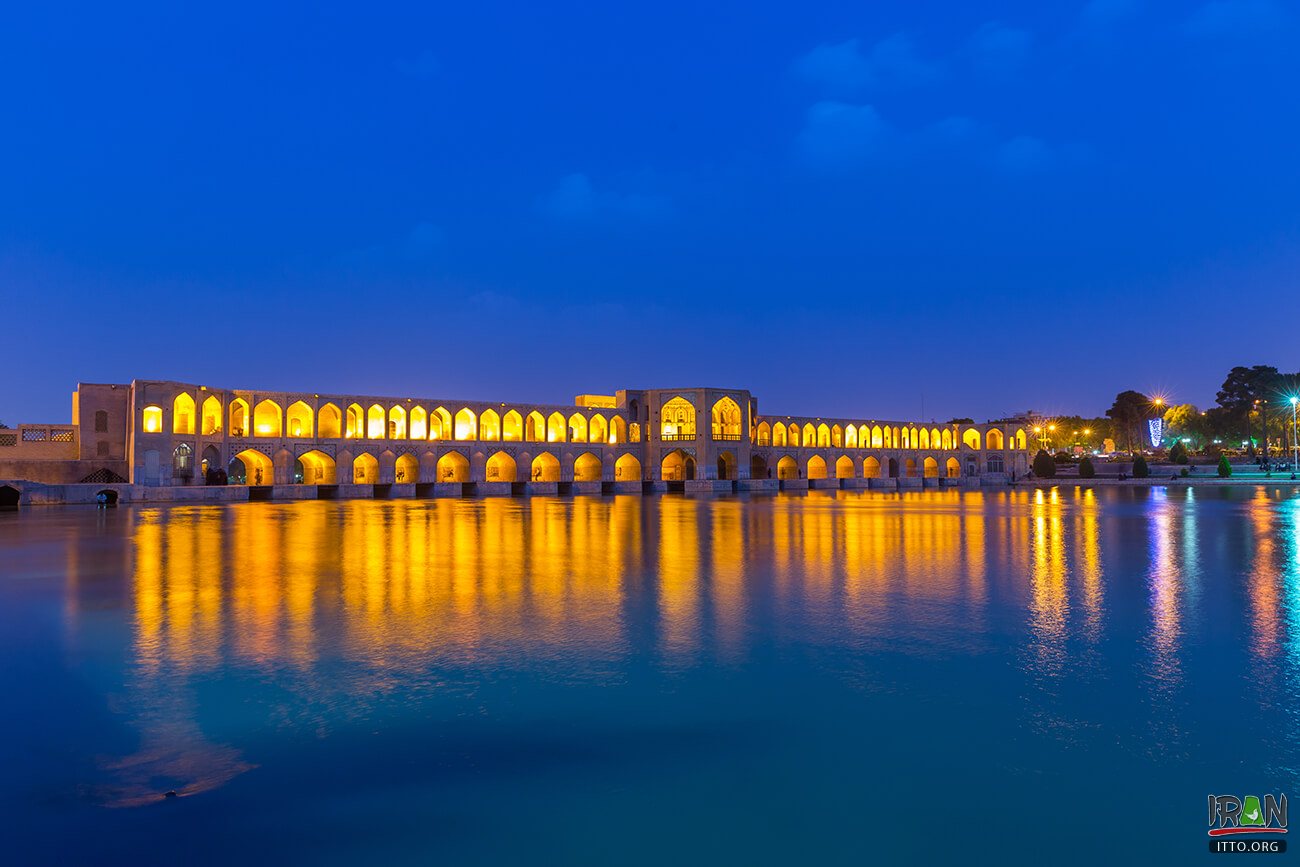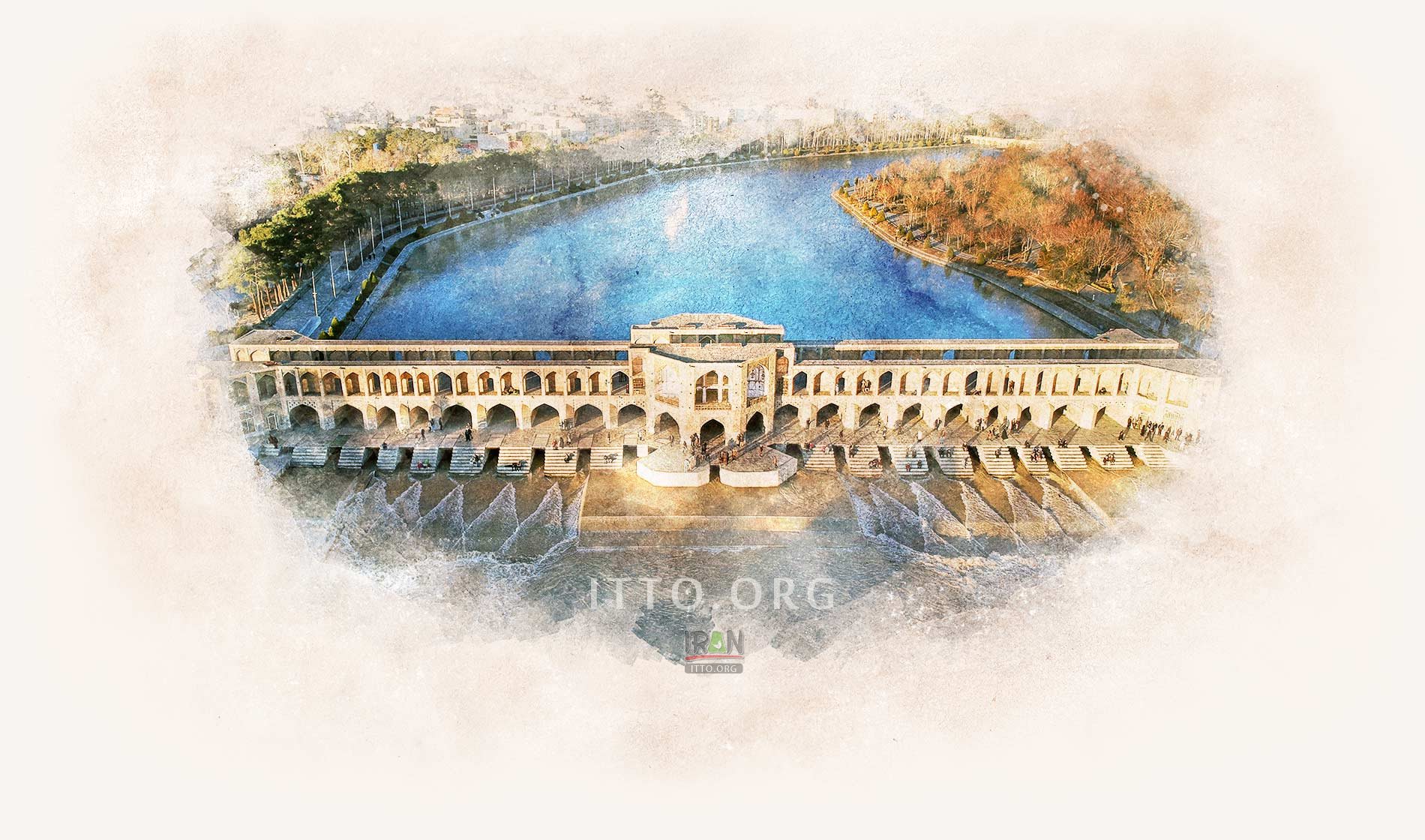The Khaju Bridge (Pol-e Khajoo) is one of the most famous bridges in Iran was built around 1650, under the reign of Abbas II, the seventh Safavid king (shah) of Iran, on the foundations of an older bridge. The existing inscriptions suggest that the bridge was repaired in 1873.
Pole Khaju or Kahju Bridge is the finest bridge in Isfahan. This bridge was built in order of Shah Abbas II, the Persian Safavid King, in 1650. Besides functioning as a bridge and a weir, it also functions as a building and a place for public meetings. This bridge is decorated with artistic tilework and fabulous paintings. There is a pavilion in the center of the structure that Shah Abbas (King Abbas) has once sat on and admired the view. Although, the only remnant of the king’s chair is a stone seat.

The amazing arches inside the bridge catch everyone’s attention right at the first sight, especially at nights when they are decorated with luminous lights.
Its cubicles, adornments and tile work are interesting aspects of this constructions. There is a structure in the center of the bridge, known as the Beglarbegi construction. The same was used as a temporary residence for the royal family. The name of this bridge is a distorted version of the word 'Khajeh' which was a title for great personalities in the Safavid era. It was constructed on the Zayandeh Rood River.
It is one of the true examples of Persian architecture and shows the Safavid cultural influence in Iran. It has 23 arches with a length of 133 meters and width of 12 meters. The bridge passway is 7.5 meters wide and this two-storey bridge is made of bricks and stones. It is good to mention that it has 21 larger and 26 smaller inlet and outlet channels. Notably, the stone pieces used in the bridge are 2 meters long. They repaired the bridge in 1873.

In words of Arthur Pope and Jean Chardin, Khaju is "the culminating monument of Persian bridge architecture and one of the most interesting bridges extant ... where the whole has rhythm and dignity and combines in the happiest consistency, utility, beauty, and recreation."
Today original paintings and beautiful tilework are available on the bridge. Additionally, the bridge is still working, although it’s been 350 years after its construction. It functions as a recreation center, social exchange and culture. The amazing arches inside the bridge catch everyone’s attention right at the first sight, especially at nights when they are decorated with luminous lights.


